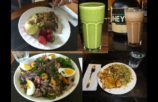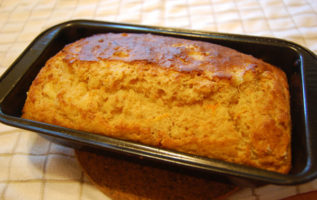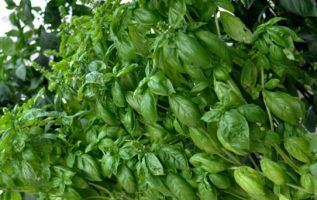
Parsley is perhaps the most overlooked component on plates in restaurants near and far.
Too often, the most attention it receives is a diner gingerly picking up the green, leafy herb, looking at it in bemusement, and then shoving it to a far corner of the plate or — if no one’s looking — tossing it on the ground.
Aww, what a plight parsley faces.
Here’s a newsflash: Parsley can be so much more than mere plate decoration. Used regularly in recipes, parsley can actually be a secret weapon in the kitchen of home cooks everywhere.
Parsley, it turns out, is the world’s most popular herb, according to The New Whole Foods Encyclopedia, and is in the same family as the carrot.
Like carrots, parsley has a thick, pale root (which even resembles that of a carrot), and its familiar leaves at top. For our purposes here, when speaking of “parsley,” I’m referring to the leaves rather than the root portion.
In your average supermarket, you’ll find parsley in two forms: curly, and flat.
The curly kind is what’s usually used in restaurants to garnish plates, and if you’ve ever tried eating it, you’ve found that it doesn’t bring that great of flavor to the party.
Flat-leaf, parsley, however, is a whole different animal… er, herb. This form, also called Italian parsley, has a nice, bright flavor, and is often used by professional cooks to make a dish really pop visually.
Below, for example, is hummus (try the recipe!) with only some paprika on top:
Now check it out topped with chopped parsley (and better lighting!):
The chopped parsley gives this dish visual pop that invites eaters to dip in.
Of course, being an herb, parsley will also add a healthy dose of fat-free flavor. And I do mean healthy. The stuff is packed with vitamins A and C, and has long been heralded as a digestive aid — one of the reasons, in fact, that it came to be put on plates in restaurants in the first place.
(The New Whole Foods Encyclopedia warns, however, that pregnant women should use the stuff in moderation, because parsley stimulates the uterus.)
Parsley is cheap — a bunch is usually under a dollar — and can be used whole or chopped.
I recommend using parsley fresh, or cooking it for just a few minutes to finish a dish like a soup, stew or sauce. If you cook fresh parsley for a long time, it can turn bitter and discolor the rest of the dish.
Parsley comes in dried form, as well, usually found as flakes. While dried parsley doesn’t have the bright, fresh flavor or soft texture that comes with the fresh stuff, I’ve used it in a pinch to subtly boost flavor and visual appeal to finished dishes.
As with so many other things culinary, the “fresh is better” mantra applies here.
So there you have it: a primer on parsley. I hope that next time you are at a store or farmers’ market, you’ll pick up some fresh parsley and try it in your next dish. If you do, feel free to share your results with others in the comments area below.
Source: iwanttocook.com (defunct blog)






























